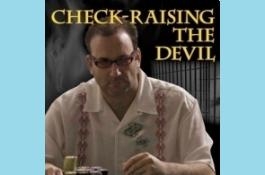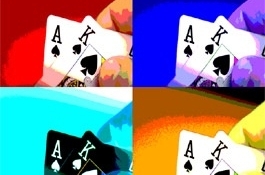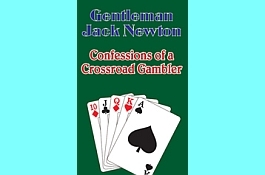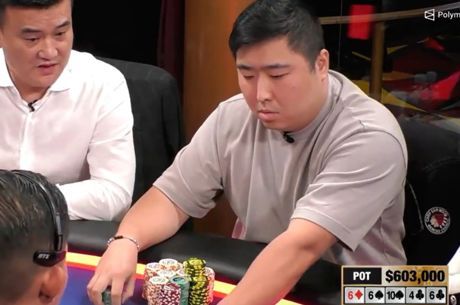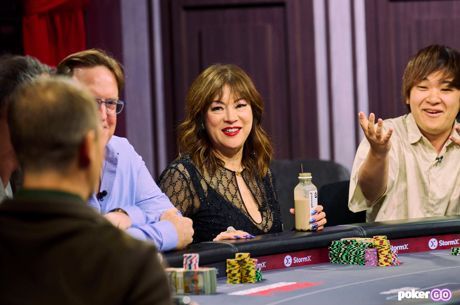Inside Mike Matusow's Head: The Writing of ��Mike Matusow: Check-Raising the Devil��
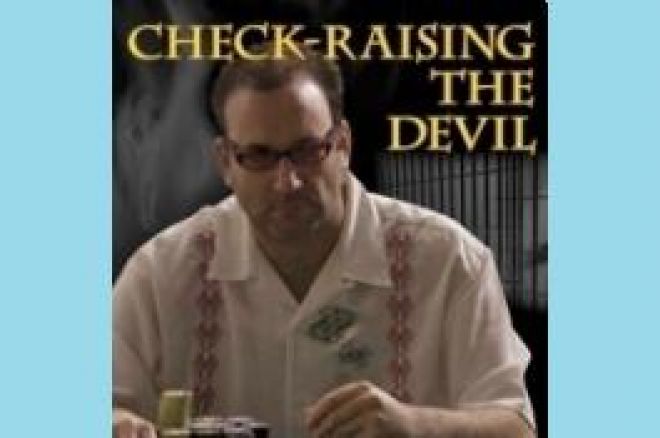
PokerNews recently caught up with Tim Lavalli and Amy Calistri, the writers who helped Mike Matusow tell his recently published poker autobiography, Check-Raising the Devil. We wanted to know what it was like for them to live inside Mike Matusow's head while writing the book.
PokerNews: How did you two first get involved with the Matusow project?
Amy: I got a chance to interview Mike right before the 2005 WSOP. We talked about jail and the roller coaster that had been his life over the last few years. A couple of days later, he had an emotional breakdown during the second event. It was just a few weeks later when I sat next to his mother on the bleachers at Binion's, watching Mike play the final table of the Championship event. In those few weeks, I not only got to experience a chapter of Mike's unbelievable story, but I got a glimpse of the challenges he faced, living with bipolar disorder �C his struggle to contain his emotional highs and lows.
When the book project came up, I knew I wanted to be part of it. But I also wanted someone on the project who was familiar with Mike's particular challenges, someone who could work constructively with Mike's disorders and capture those elements of Mike's story. I immediately thought of Tim.
Tim: I was in Melbourne covering the 2007 Aussie Millions when Amy got a hold of me. She told me that the Matusow book might be available and she was in line for it. Without a doubt, I knew this could be the best poker biography out there. Amy said that she really didn't want to do it alone and that she felt the project needed a psychologist involved. Since I am one of those and Amy and I had written together in the past, it seemed like a perfect fit.
PN: What were the most challenging aspects of writing this book with Mike?
Tim: It's hard enough to do a book with a pro that spends so much time on the road. But it was a whole different level of frustration not to have access to a completely focused Mike. But we learned early and repeated often: "If Mike were not this way, there wouldn't be a book worth writing." One of the things that makes Mike's story so compelling is that he has overcome two devastating psychological disorders. The idea that anyone with ADHD can play poker at the level Mike does is simply unimaginable.
So one of the biggest challenges we had was to come up with a flexible work schedule that took into account the kind of day Mike was having. Sometimes I would just go over to Mike's house and just watch football. Other times we would get in hours of taping. Our process also involved reading the material back to Mike a number of times, to make sure we captured everything. This not only helped Mike focus, but it also helped trigger some unbelievable stories that might not otherwise have ended up in the book.
Amy: I think there are a number of people who could write great books about Mike. But writing as Mike meant making sure that he got to tell his story as he saw it in a way that people would expect Mike to tell it. Getting Mike's voice right was paramount. Along with re-watching all his video footage and listening to the hundred hours of audio interviews, we also enlisted some faithful readers to test out how well we captured Mike's voice. And of course, Mike made sure he sounded like himself.
And personally, one of the challenges I didn't expect was just how much time I would spend inside Mike's head. There were days when I felt so immersed in his story that it started to color the world around me. I actually considered going to Narcotics Anonymous while writing about the meth years. Then there were days when I just sat in my office, laughing out loud, listening to Mike sing to his cats. And when Mike would dissect a table dynamic and hand with such skill and detail, I couldn't help but think about my own poker game on a different level.
PN: What was your favorite scene in the book?
Amy: I loved everything about the 2002 WSOP Omaha hi/lo event. The day before the event, Mike had a big blowup involving Shawn Sheikhan that ended up with Mike getting thrown out of the poker room. The eventual heads-up match between Mike and Daniel Negreanu was an epic battle of taunting and needling. And the backdrop was Mike fighting off the withdrawal effects of meth. Everything about that event was epic; it was epic theatre, poker, tragedy, and victory.
Tim: My favorite scenes all have one thing in common and that is how I first heard them. After we thought a chapter was finished, I would read it to Mike with my audio recorder on. We thought at first this would allow us to catch mistakes or misstatements. In fact, on about a half dozen occasions during those readings, Mike would stop me and say things like, "Why did we leave out the story about the guy robbing me at gunpoint?" or "Didn't I mention that dinner with Chris Ferguson when he gave me that tip?" Out of nowhere we got these great bits of the story after we thought we had it all. Those are the scenes I remember every time I go near the book. The surprises are always the best.
PN: Is the story completely true and unedited?
Tim: I think the thing that surprised us both was the level of recall Mike was able to provide. The first day we met with Mike, I asked him a question about the 2005 WSOP. He literally spoke without a break for 45 minutes, detailing hands, blind levels and chip counts. Then we asked him about the 2005 Tournament of Champions and Mike did another uninterrupted 45 minutes. After that, Mike smiled and said: "That's enough. Get the hell out of my house!" On the ride back, Amy and I were just stunned by the details and recall Mike had about those events and we thought our job was going to be a lot easier than we had expected.
Of course, not all days were that easy and we had to do a lot of reconstruction to get the events of Mike's life in order. But one thing I can say, Mike never covered anything up. We actually took out some references to protect both Mike and some of this friends and associates. The names have been changed to protect the innocent. But not once did Mike have us pull something from the book because it might be embarrassing or too revealing.
Amy: The details of Mike's life make a good story. But what makes it a great story is the fact that Mike is Mike �C wearing his heart out on his sleeve. He shares the good, the bad, and the ugly. In one breath he'll tell you why he's the greatest poker player in the world. But in the next breath, he'll open up about a painfully unflattering story about something he'd done. I think that's why so many people connect with him. They know that what they see and hear is the real Mike. He holds nothing back. And in some ways, I'm not sure he even knows how. People who read the book, even people who know a lot about Mike already, will get to know and understand him on an extremely personal level. And if we've done our job well, they'll know what it's like to live inside Mikey's head.
Are you looking for a PokerStars.com marketing or bonus code? - You've come to the right place, get in the action with PokerNews.com

